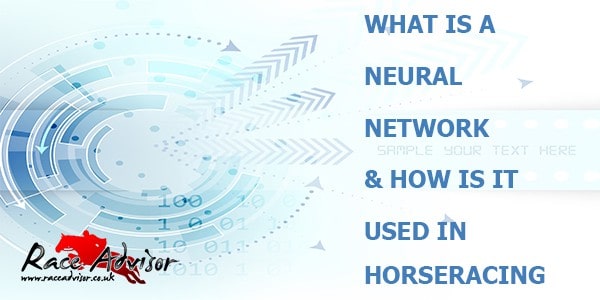
The term ‘Neural Network’ can seem a bit daunting if it’s the first time you’ve ever heard it but in reality, it is simply a computerised system that learns which combination of inputs leads to a certain output.
This is of course a remarkably simplistic way of describing a neural network but since full explanations tend to come in the form of PhD level papers laden with scientific jargon, I’ll move swiftly on to the process of explaining how a neural network can help you win money on horse racing.
Why Is This Software Useful For Horse Racing Predictions?
In theory it is possible to input data such as speed, the position of the horse during previous races, earnings, class, win percentage and days since the last race in order to predict the outcome of future races.
There is a multitude of software options on the market; what you want is one with a user friendly interface which requires you to have no previous knowledge of neural networks to make predictions. Your job is to choose the data to be used and set a few parameters. The application should be able to do the hard work of building the neural network and giving you the predictions.
Choosing Your Data
One of the biggest challenges you have is deciding the data to use in your neural network. There is a host of statistical information you can use but the more detailed your data the better your final predictions. As a very basic example you could use:
- Number of horses in the race.
- Weather condition.
- Days since the last run.
- Draw position.
- Average time for last 5 races. Obviously, this will prove tricky as you’ll need to adjust for track and race length variants among others).
- Jockey.
- Trainer.
Your ‘output’ would be the predicted finishing time of the horses. You would then analyse all the horses in the race using the above inputs and all of the information would need to take the form of numerical values.
For simplicity’s sake, look for data that can be found from a single source. You’ll probably find discrepancies in the data presented by one source when compared to others. If you decide to take data from several sources, your entire system will be in disarray. For instance, don’t use Sporting Life for half your data and The Racing Post for the other half.
The whole point is that your neural network is trained to spot the patterns in the data it sees before analysing it. Once you have gone through the initial ‘training’ process and the learning stops, the network should be tested using previously unseen race data. You should already know the outcome of these test races but you don’t add this new data to the network. Instead, you test it to see if it is capable of forecasting the winner based on what was learned during the training phrase.
The duration of the testing phase is entirely up to you but it’s usually better to wait and see if you’re just hitting a lucky streak or if you have truly developed a system capable of producing long term profits. Remember, it’s better to lose and know why than win blindly although most punters are just happy to take a few quid from the bookies by any means necessary!
A Case Study of Success
Back in 1990, Don Emmons had remarkable success with his neural network when he picked 17 winners from 22 selections at Detroit racetrack. He only used four pieces of information to begin with:
- The number of horses in the race.
- The track record.
- The horse’s post position.
- The horse’s finish times.
When he selected three horses as the possible race winner, one of them won 77% of the time. He let training continue until the network was accurate 95% of the time. He also created his own race selection system:
- He avoided maidens and races with allowances.
- He focused on races with 9 horses or less.
- He chose horses with a minimum of 8 previous runs.
- He decided that races with a longshot to favourite ratio of at least 37% offered the best value. In other words, there needed to be 3 longshots in a field of 8 runners. What we don’t know is what odds Don considered to be a longshot nor can I find the final ROI from his wins.
Conclusion
There are a number of tipster sites that use a neural network to make initial predictions before selecting the final tips themselves. You can judge their success for yourself by checking out the quality of their tips.
When using a neural network, try not to overcomplicate things. It is best to stick to a small group of courses and look to make your mark on them. Keep testing the network until you feel it is ready and use as many input factors as possible in order to get the most accurate predictions.